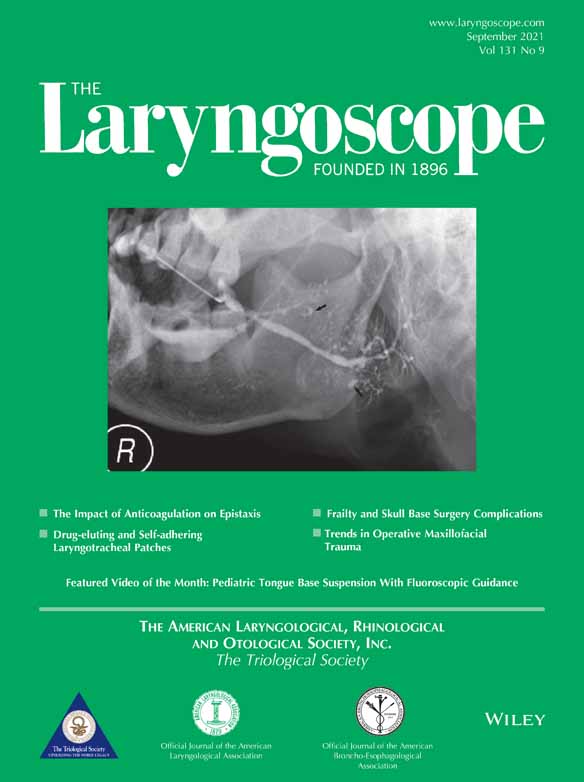Distress Screening in Head and Neck Cancer Patients Planned for Cancer-Directed Radiotherapy
Editor's Note: This Manuscript was accepted for publication on February 17, 2021.
Meeting presentation: AROICON 2018.
This study was supported by the intramural grant from The Tata Memorial Centre, HBNI, Mumbai.
The authors have no other funding, financial relationships, or conflicts of interest to disclose.
Abstract
Objective/Hypothesis
To estimate the prevalence of baseline clinically significant distress (distress score ≥ 4) in head and neck cancer patients planned and treated with radical intent radiotherapy using the National Comprehensive Cancer Network Distress Thermometer (DT) and assess factors predictive of distress.
Study Design
Cross-sectional study.
Methods
This was a cross-sectional study evaluating distress in 600 head and neck cancer patients undergoing radiation therapy. The DT was used to screen patients for distress at baseline before radiotherapy.
Results
The median distress score of the entire cohort was 4 interquartile range (IQR) (IQR: 3–5), and 340 patients (56.7%) had clinically significant distress. On univariate analysis, the causal factors predictive of distress were low socioeconomic status (P = .04), presence of proliferative growth at presentation (P = .008), site of the tumor (oral cavity, P = .02), comorbidity (P = .04), and presence of Ryle's tube or tracheostomy tube at baseline (P = .01). Low socioeconomic status was significant (P = .04) on multivariate analysis for high levels of distress.
Conclusions
Among head and neck cancer patients, 56% of patients had clinically significant baseline distress, and patients with low socioeconomic status had high distress. There is a need for interventions to mitigate distress.
Level of Evidence
4 Laryngoscope, 131:2023–2029, 2021




